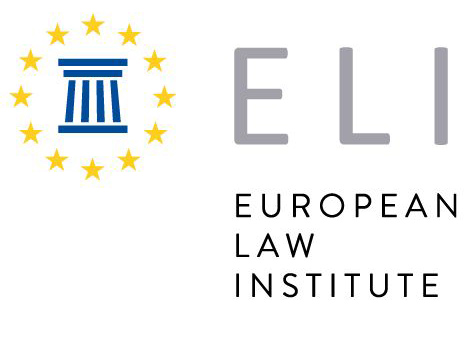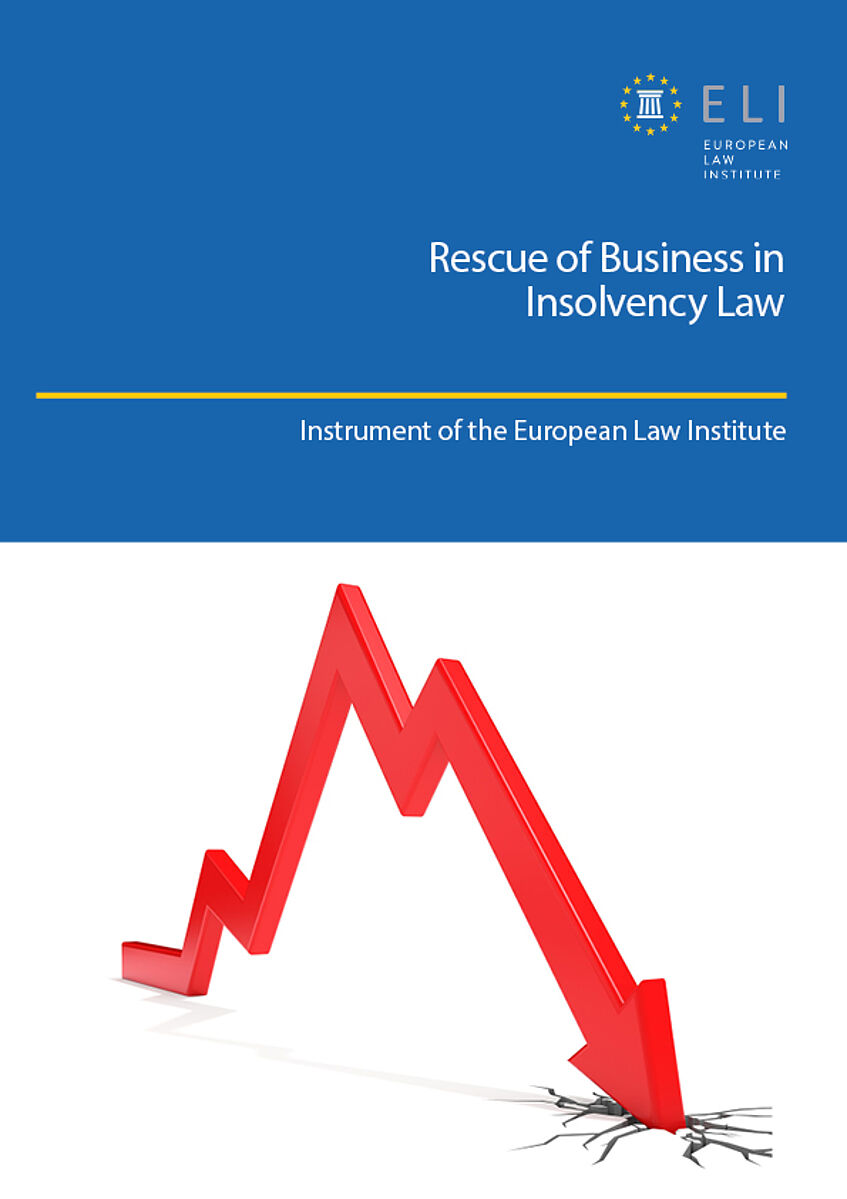ELI Instrument Rescue of Business in Insolvency Law
Quick Facts
Project Type and Output: Report
Procedure: Normal
Adopted: CD 2013/8
Project Period: September 2013–September 2017
Translations
The following version is available: Russian.
Citations
A selection of citations about the project is available here.
OUP Publication
The Oxford University Press (OUP) Publication of the ELI Report is available here.
Other Events
An overview of past and upcoming events of this project is available here.
Summary
Since the global financial crisis, insolvency law has been at the forefront of law reform initiatives in Europe and elsewhere. The Project Team designed (elements of) a legal framework consisting of over 100 recommendations that seek to ensure the further development of coherent and functional rules for business rescue in Europe.
Background
Insolvency law seems to be at the forefront of reform initiatives in Europe and elsewhere and business rescue is an issue which ranks top on the insolvency law related agenda of EU institutions. On 15 November 2011 the European Parliament (EP) approved a ‘Motion for a European Parliament Resolution with Recommendations to the Commission on Insolvency Proceedings in the Context of EU Company Law’. In its Motion, the EP requests the Commission to submit one or more legislative proposals to the Parliament. The EP listed no less than 31 points, several of which were related to the enhancement of 'corporate rescue as an alternative to liquidation'. The Commission took up this idea in various publications. While further targeted harmonisation of national insolvency laws was limited to a few specific topics within the ongoing revision of Council Regulation (EC) No 1346/2000, 'rescue' of businesses was a key element of the Commission’s proposal of 12 December 2012 to amend this Regulation.
Outline
The aim of the ELI project on Rescue of Business in Insolvency Law was to design (elements of) an appropriate legal enabling framework, which included certain statutory procedures that encourage parties to negotiate solutions in a situation of business distress. In addition, such a framework would include rules to determine under which procedures and conditions an enforceable solution can be imposed upon creditors (including equity holders, etc) despite their lack of consent. This ELI Instrument therefore also covers constitutional aspects of those parts of the law, such as the constitutional protection of property, which is often understood to impose the 'no creditor worse off principle' (ie not worse off than in case of liquidation). The results of the project go beyond the outcome of the revision of the Insolvency Regulation.
The project was carried out over a period of 42 months. In its first few months, the reporters engaged in intensive discussions over the composition of the Advisory Committee (AC) as well as National Correspondents (NCs), striving to assemble a diverse group not only in terms of nationality, but also vocational backgrounds and expertise. In all, some 40 experts were assembled, from some 14 jurisdictions. A Members Consultative Committee (MCC) was established. Through the MCC all interested ELI members had the opportunity to actively participate and contribute to the work on the project.
In the first year, NCs drafted inventory reports on their respective national insolvency laws, based on a detailed questionnaire prepared by the Reporters. Some topics that were covered in those reports include: governance and supervision of in-court and out-of-court rescue, special protection for financing a rescue, treatment of executory contracts, the ranking of creditors, avoidance powers, restructuring plans, special arrangements for SMEs and the position of liquidators and directors. In addition to these national reports, an inventory report on international recommendations from standard-setting organisations, such as the World Bank and UNCITRAL, was drafted.
The results of the first year’s work were presented and discussed at a conference held in Vienna on 19 and 20 March 2015. In the later stages of the project, these outputs were used by the project team to formulate their recommendations for reform. The process was assisted by input from an AC, staffed by experts in relevant areas of law and legal practice across Europe.
The progress made by Reporters was presented and discussed on several occasions, including at the ELI Annual Conferences in Vienna in 2015 and in Ferrara in 2016 as well as during special conferences in Stockholm in 2016 and in Leiden in 2016. The Reporters finalised their Instrument, taking into account the input receive during thsse events, and submitted their Final Draft to the relevant ELI bodies.
The ELI Instrument on Rescue of Business in Insolvency Law was approved by the ELI Council and by the ELI General Assembly at the ELI Annual Conference 2017 and is now available here. You can learn more about the project by browsing through this Special Report.
Following approval, the Instrument was launched on the occasion of the 52nd Session of the United Nations Commission on International Trade Law (UNCITRAL) Working Group V (Insolvency), with an event organised on 20 December 2017 at the Austrian Ministry of Justice, which attracted around 60 participants. It has since been disseminated on other occasions.
In the last week of August 2018, United Kingdom (UK) Government announced new legislative tools to improve rescue opportunities for financially distressed companies. We were delighted to see that this report refers explicitly to the ELI Instrument on the Rescue of Business in Insolvency Law. In particular, the report mentions the discussion about the so-called ‘absolute priority rule’ versus ‘relative priority rule’, elaborated on in the ELI Instrument, and is yet another example that ELI outputs are of immediate practical utility.
Project Team
- Bob Wessels (Reporter)
- Stephan Madaus (Reporter)
- Gert-Jan Boon
Advisory Committee
- Jan Adriaanse
- Catherine Bridge
- Horst Eidenmüller
- Damien Geradin
- Robert Hodgkinson
- Francis Kessler
- Chris Laughton
- Rimvydas Norkus
- Alberto Núñez-Lagos
- Paul Oberhammer
- Elizabeth Stong
- Matthias Storme
- Onofrio Troiano
- Heinz Vallender
Observers
- Mihaela Carpus-Carcea (European Commission)
- Kristin van Zwieten
National Correspondents
- Saliha Bardasi
- Michał Barłowski
- Reinhard Bork
- Hélène Bourbouloux
- Giorgio Corno
- Filippo Corsini
- Katharina Crinson
- Rick van Dommelen
- Juan Ferré
- Lucas Flöther
- Roel Fransis
- Sylvain Hustaix
- Helmuts Jauja
- Friedrich Jergitsch
- Florian Klimscha
- Ángel Mª Ballesteros
- András Osztovits
- Stathis Potamitis
- Michael Schillig
- Nick Segal
- Erik Selander
- Melissa Vanmeenen
- Sophie Vermeille
- Reinout Vriesendorp
- Fryderyk Zoll
Members Consultative Committee
- Antigoni Alexandropoulou
- Levent Börü
- Ana Maria Cediel Serra
- Shaun Charlton
- Geoffrey Compton
- Pedro del Olmo
- Rolf Dotevall
- Sjef van Erp
- Anne Birgitte Gammeljord
- Fransisco Javier Jiménez Muñoz
- Tatjana Josipovic (Chair)
- Reiner Kulms
- Pablo Lerner
- Renato Mangano
- Asociación Española de Peritos Judiciales y Mediadores Arbitrales (AEPJMA)
- Nicoleta Mirela Nastasie
- Fransicso Oliva Blazquez
- Miguel Pestana de Vasconcelos
- Maximilian Pluta
- Kristijan Poljanec
- Lorenzo Prats Albentosa
- Valentin Retornaz
- Alessandro Scarante
- Piergiuseppe Spolaore
- Radu Stancu
- Felix Steffek
- Raffaele Torino
- Matthias Weissinger

